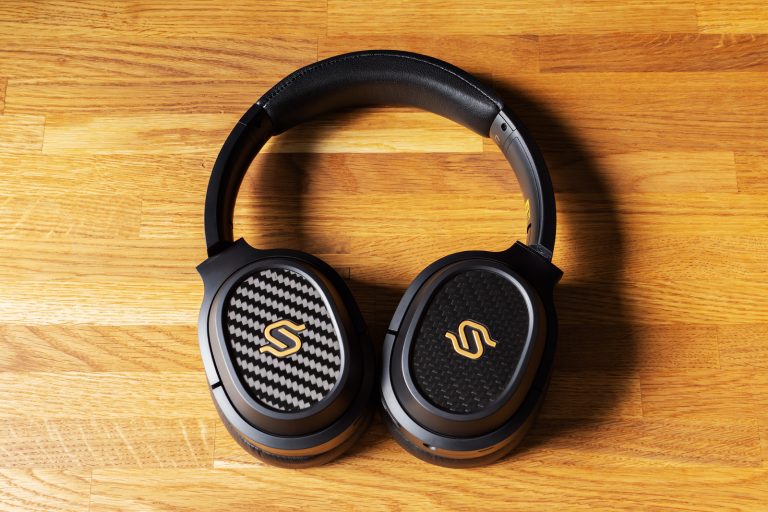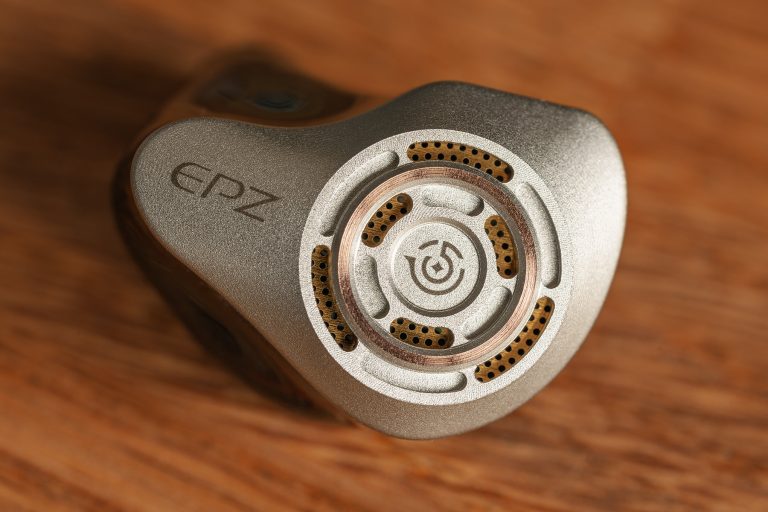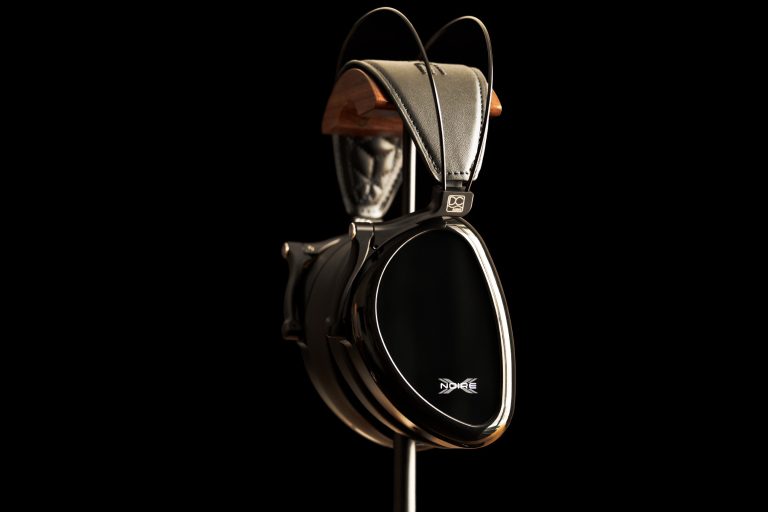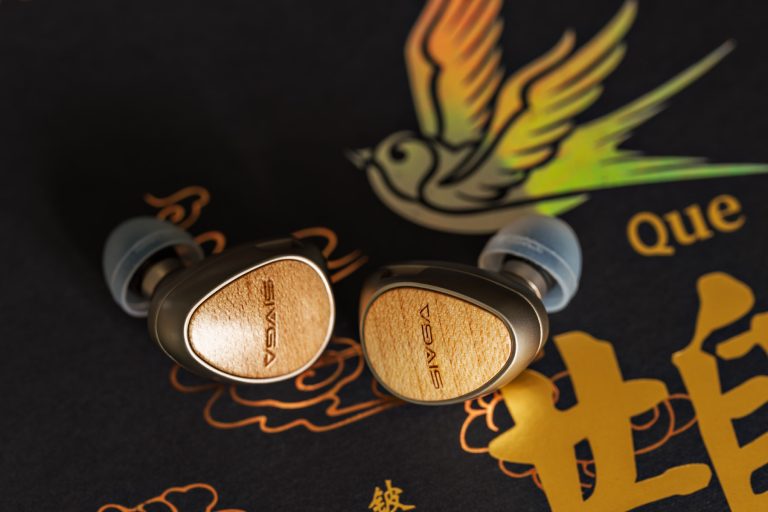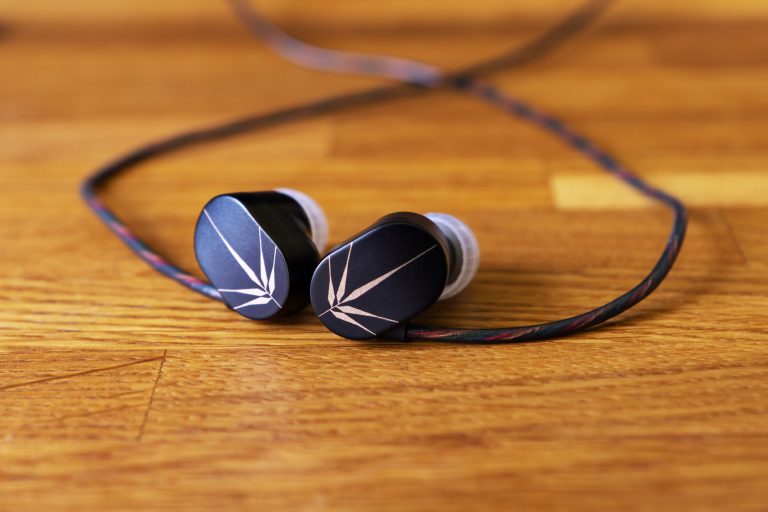DUNU Alpha 3 Headphones Review
I often get interesting questions from my wonderful colleagues: which headphones should one purchase, should one make their purchase now or it would be reasonable to wait a bit, does this work fine with that, etc. And such questions seem kinda logical, and I always gladly answer those. The questions aren’t any difficult, either – there are no audiophiles among my colleagues. But sometimes they ask about something I can’t process or produce any advice about even on the other day!
One of these out-of-the-blue questions was the following: ‘I’m looking for some decent earbuds. Wired model. I want to just hang these on my ears and not shove them inside. And so that these would be just a little bit audiophiliac!’ ‘Are you freaking serious,’ I thought. ‘Wow,’ I said. There was absolutely no way I could imagine the words ‘audiophilia’ or even just ‘good sound’ and ‘earbuds’ in one sentence – not to say in one product!
So, the research began.
As a result, I’m glad to present you this DUNU Alpha 3 review. These are some quite audiophiliac earbuds, which my colleague agreed to first lend me for palpation and testing… and then he even gave them to me for personal use forever. Konstantin, my deepest gratitude!
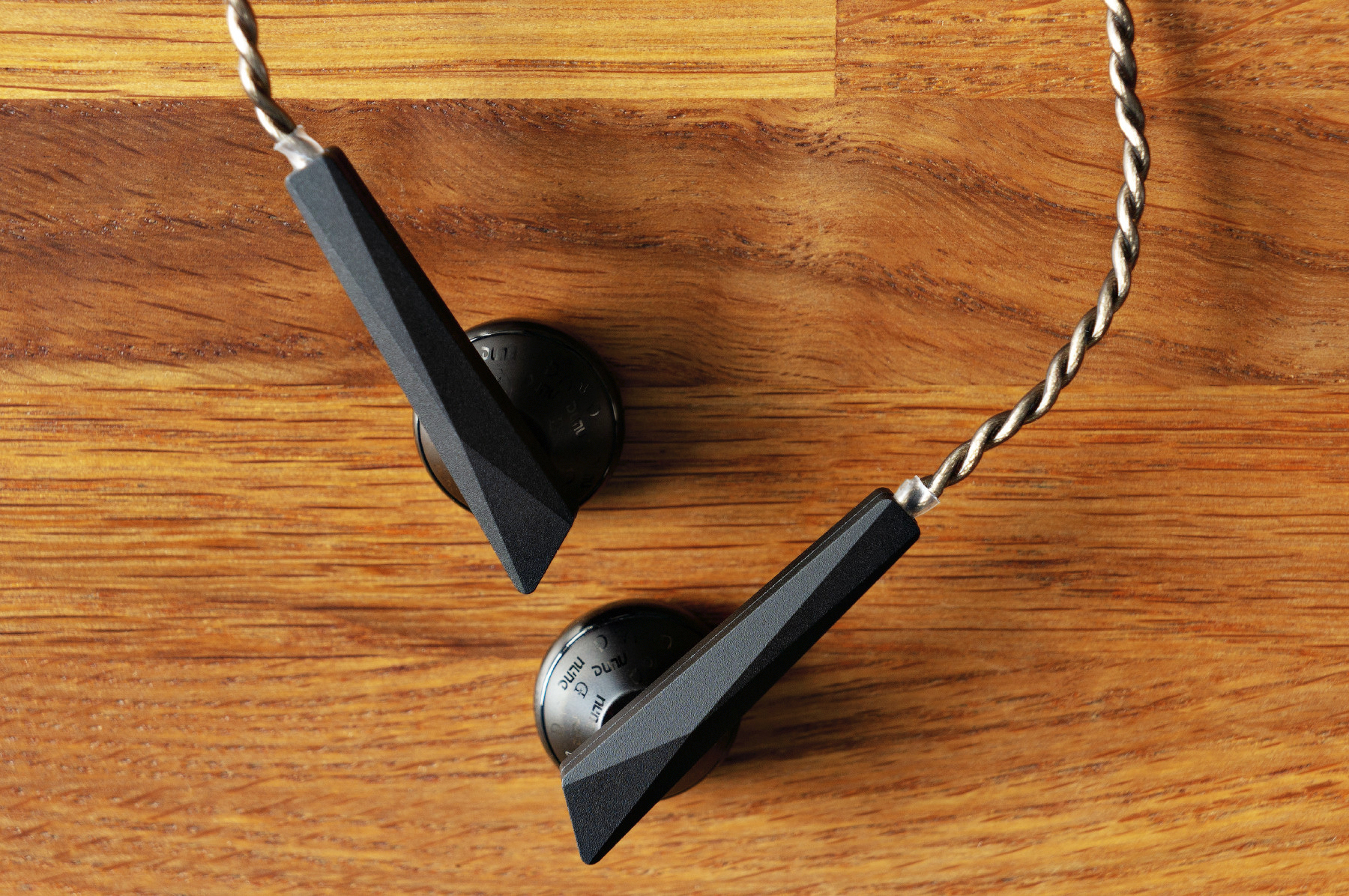
What’s included
The headphones come in an elite black box, the lid and bottom of which are fitted so tight that you need to apply some effort to open the box.
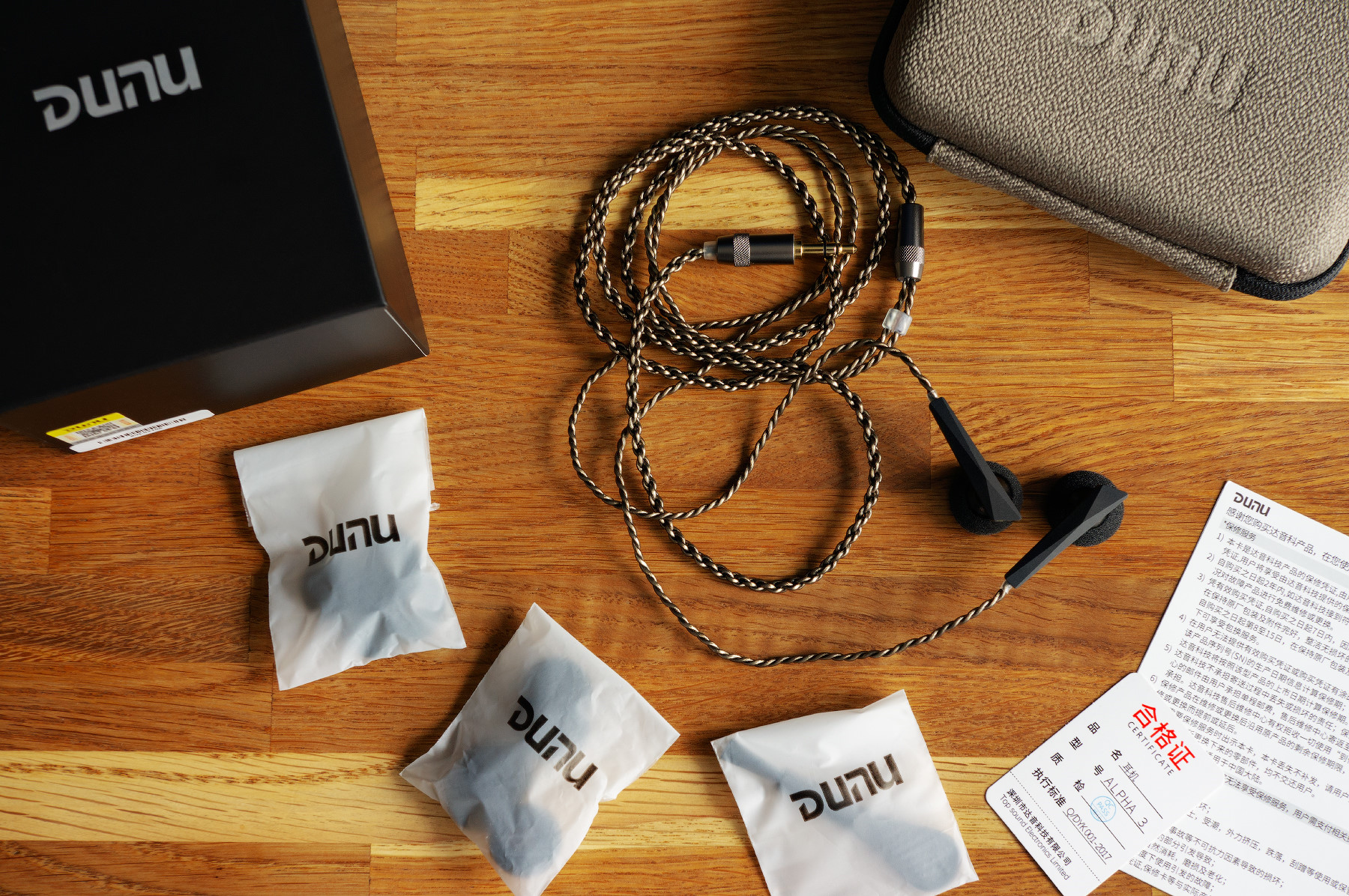
The box contains the following items.
- A huge hard case which actually takes almost the entire interior box space
- 2 sets of eartips
- Earpiece cleaning tool
- Some papers
Everything is looks and feels very decent. Why is the case so large, though? 10 pairs of DUNU Alpha 3 can fit inside! I think this might be the additional space for a snack stash.
Design, assembly, technology
Technically, the Alpha 3 are dynamic earbuds with a non-detachable cable. You can order a version with an unbalanced (3.5 TRS) or balanced (4.4 TRRS) cable at the manufacturer’s store.
A lithium-magnesium alloy was used for the driver, and a liquid crystal polymer was used for the 14.2-mm diaphragm. The headphone enclosures also feature a ‘multi-channel compensation system’. Hope it’s a good sign.
The quality of the headphones is simply magnificent. I just can’t look at them as just headphones – they truly look like some futuristic jewelry from the DeusEx universe. No chips or flashes, no unfinished edges or any other signs of cack-handity on the steel enclosures.
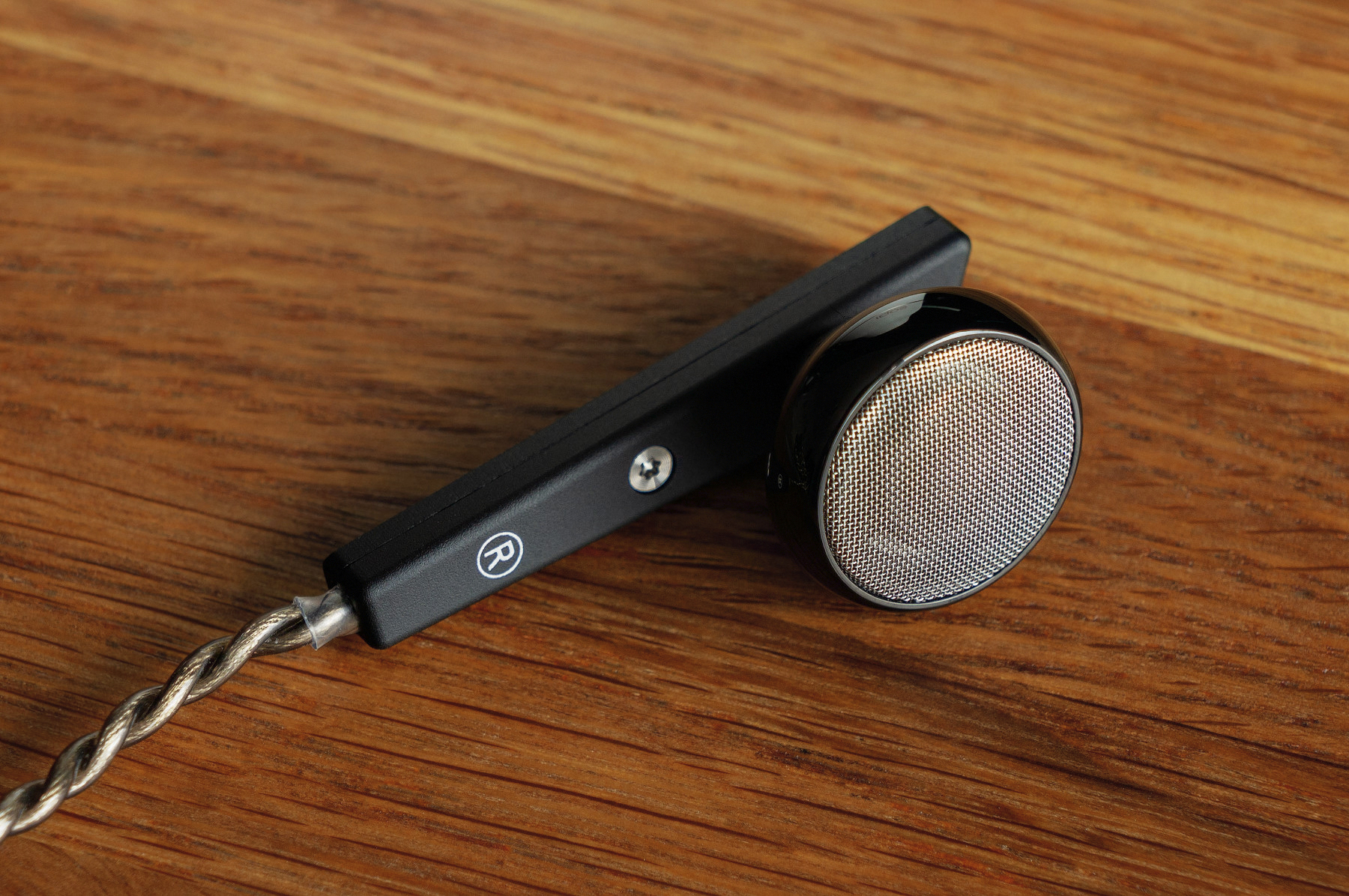
By the way, the very first time you take the headphones in your hands, they seem unexpectedly heavy. But put them in your ears, and you don’t even start to morph into a flop-eared goat.
The back surfaces of the earpieces are covered with small inscriptions, and there are compensation holes, too.
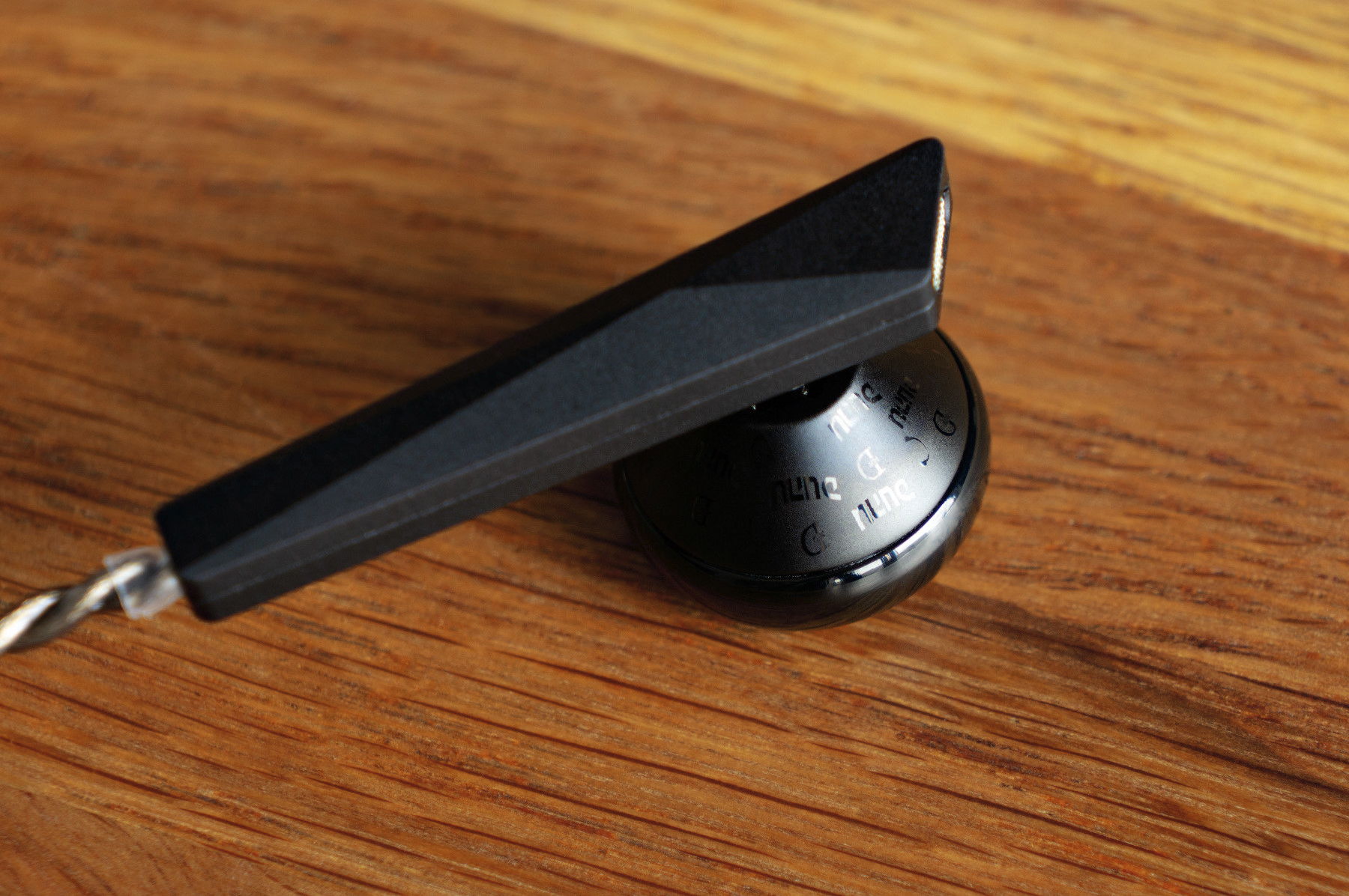
On the enclosure upper surfaces, there are extra tiny meshed holes.
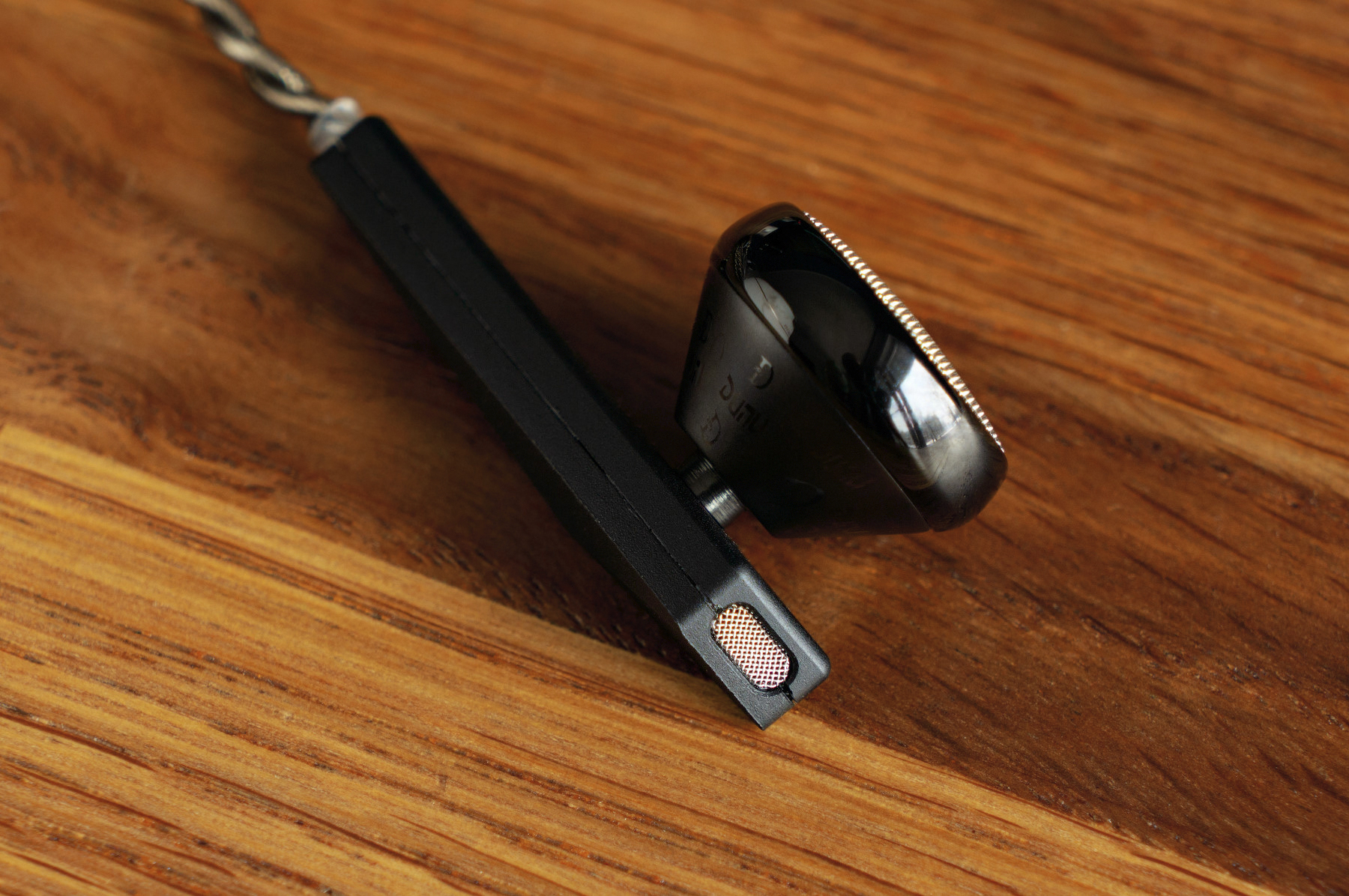
The 120-centimeter cable is also a premium-quality; of course it’s litzendraht, of course it’s made of monocrystalline copper, of course it has some silver coating. What else would you expect? The connector and the splitter also demonstrate a delightful precision of processing and some elegance (with a good half of badassery in design). It’s just a beautiful cable, what else can I say.
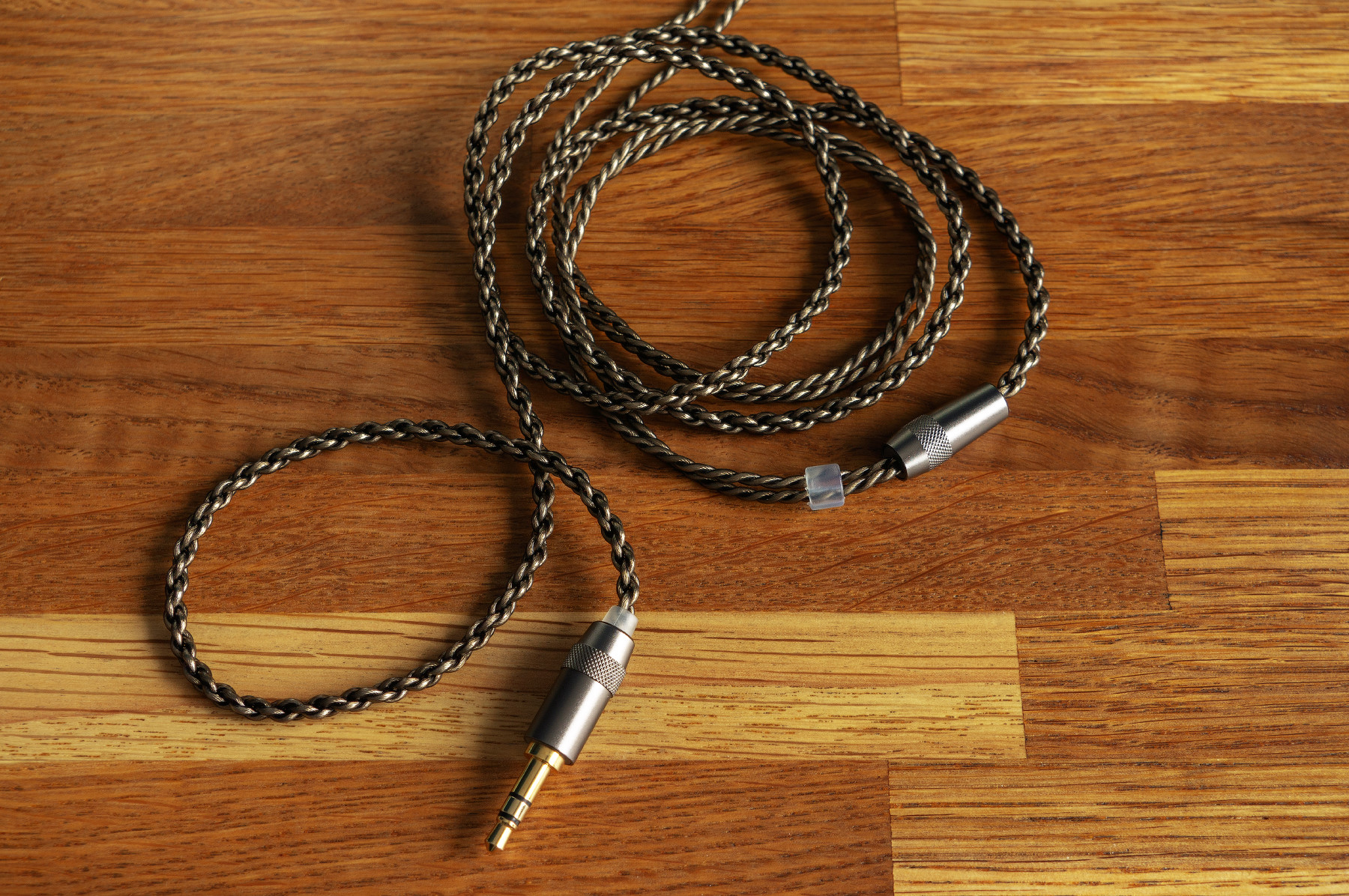
All in all, the DUNU tried to make some high-quality, stylish and truly authentic headphones, and they clearly did well. Can’t find anything to whine about, honestly.
Ergonomics
Personally, I don’t really like or even understand the earbud form factor: it’s uncomfortable and unusual for me. That’s why I’m going to refrain from making any comments on the earbud ergonomics, otherwise any of them would be too subjective. It doesn’t mean I have nothing to say about the earbud usability, though!
The first and the most important thing to point out is that the sound insulation is nowhere to be found here (which is perfectly okay and expected from any earbuds). It’s so damn irritating, though, when you can’t just pick the right eartips/earpads to remove even a portion of any ambient noise, but have to turn up the volume to hear your music.
The second thing (the most important, again) is that you can’t expect any always comfortable or even always uncomfortable fit here. This also leads to completely different perception of the earbud sound signature. Which is a subjective assessment, I know.
The third strike would be the steel enclosures: it’s kinda cold to enjoy your playlist in winter, even with some warm hat on top.
I’ve been testing these for two weeks, and I still haven’t learned how to fit them in my ears so that I could sit, walk and do stuff without adjusting the earbuds at least once for at least 15 minutes. The eartips make things better a bit, but it’s still very far from a truly stable fit the in-ear models have to offer.
Therefore, for me personally, the ergonomics of this model turned out to be very controversial. Just to make things clear: some of listeners hate the in-ears and prefer the earbuds – and it’s okay. And subjective.
Quick specifications overview
- Design: open-back earbuds.
- Drivers: 1 dynamic driver.
- Impedance: 32 Ohms.
- Sensitivity: 105 dB.
- Cable: non-detachable.
Subjective sound impression
Listening to Alpha 3 was a truly unusual experience: I didn’t expect any wide, voluminous sound from such small headphones. Whether this is due to a large diaphragm, or it’s because of a larger (compared to in-ear models) airspace between the driver and the eardrum – I don’t know! The fact is that the Alpha 3 sound more like speakers than headphones.
There are 2 types of eartips included, and these change the sound drastically. I’d love to note that the Alpha 3 aren’t intended to be used without any eartips.
The perforated eartips have a large hole in the center and cover about 60% of the speaker area. The non-perforated ones, on the contrary, cover the entire earbud like a stocking. A non-sexy kind of stocking.
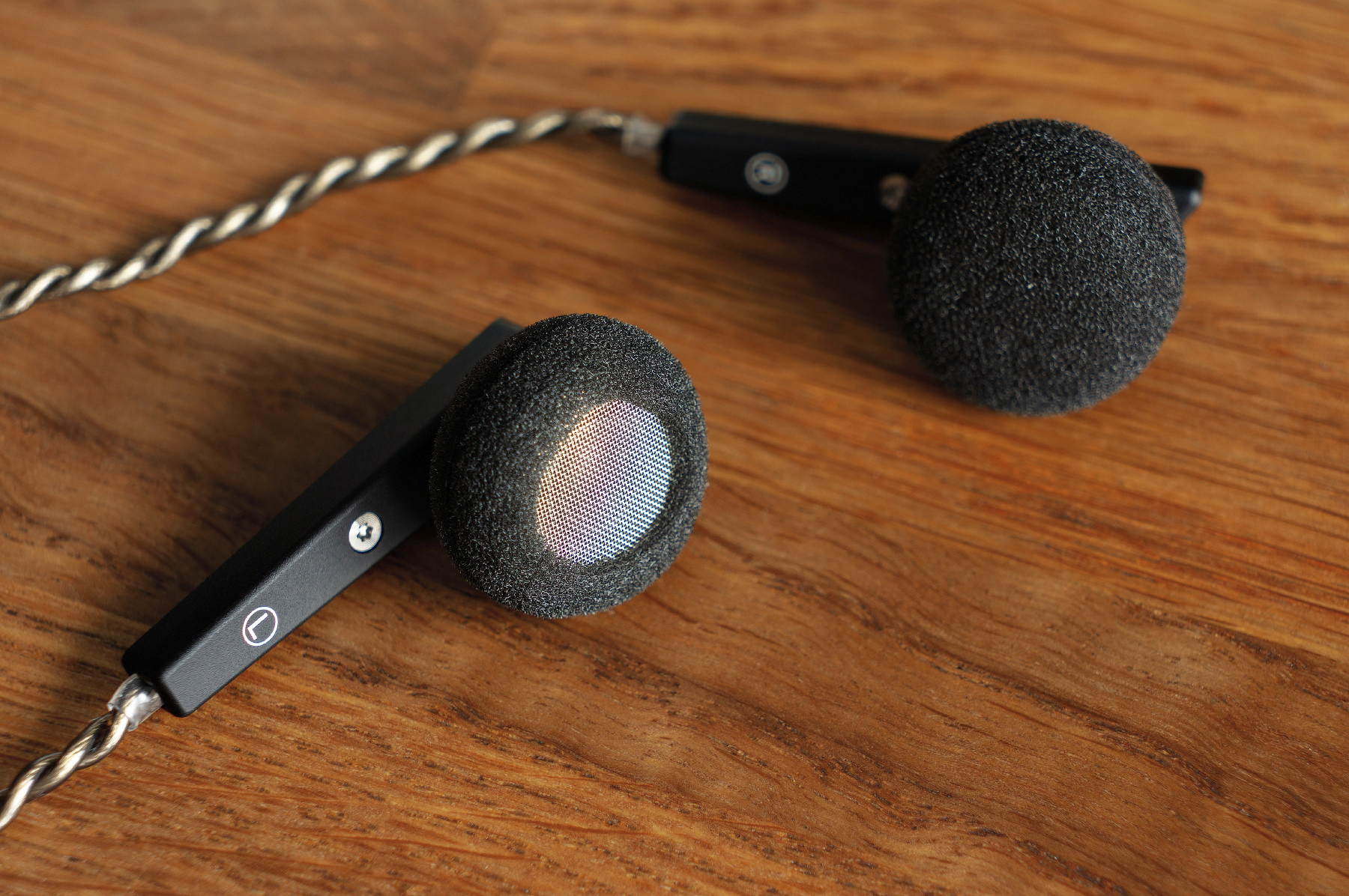
The perforated eartips strongly emphasize the mid-frequencies around the 3 kHz mark. The emphasis is so strong I can’t, I refuse to seriously consider such a sound signature. But the non-perforated eartips the sound corresponds to what these earbuds really sound like – and this is exactly the sound I’m going to assess below.
In the lower-frequency section, there’s an inevitable quantitative, but not qualitative shortage of effort. The subbass is reduced and is perceived through harmonic ‘filter’ rather than directly. Around the 120 Hz, I can hear a noticeable accent, which seems to compensate for the underperforming frequencies below this point. When playing tracks with nice and big lower frequencies at high volume, the earbuds nearly vibrate in your ears. Which never masks the underweight in the very bottom of the frequency range.
The middle section of the range is simply magnificent – it’s smooth, it’s detailed, it feels correct. There are just no significant frequency response deviations in this part. The instruments sound realistic, don’t mix into one inseparable whatever, and the position of each of them on the sound stage is well defined. It’s just some almost exemplary midrange range, I’d say!
The higher frequencies are airy and transparent, and, along with the middle part, are delivered exactly as per the neutral tuning standard. Just the exact amount, no rustling, no tutting. They’re fantastically detailed, full-fledged, informative.
Broadly speaking, I’d characterize the Alpha 3 sound as wide, detailed, balanced, and the tuning is generally focused on the midrange, but with very correct higher-frequency handling. The Alpha 3 play any live-instrument tracks amazingly effectively and excitingly, they reproduce any voices realistically, and do some excellent job when dealing with orchestras. As for any electro, dubstep or metal – in other words, with any subbass-saturated stuff – the sound delivery seems to be somewhat faded and expressionless; so if you like your music powerful and with almost tangible punch, then the Alpha 3 are definitely not your model.
Sound source choice
Despite the low resistance and relatively high sensitivity of these earbuds, I still thought that maybe the Alpha 3 just need some more power to sound better. My suggestion is to purchase a 4.4-mm connector version and then connect it to a balanced-output sound source.
Eartip choice
I’ve already described the differences between the provided eartips above.
Well, the eartip choice is a pretty shady topic itself, and I don’t really feel fit to dole out any advices. Does the foam density affect the sound? Are there any non-foam eartips? Are there any eartips with a sort of sound ducts that would enhance the recoil in the lower-frequency section?
If you have anything to say about this – you’re so welcome in the comments!
Measurements
The headphones were connected to the RME ADI-2 DAC (IEM output). A measuring rig conforms to the IEC60318-4 standard. For each of the earpieces, the measurements were made until 5 reliable and stable measurements were obtained for the left and right channels; any deviant measurement results were excluded. The provided eartips were used for measurements. The smoothing is indicated on the graphs. As always, for the info about rigs, graphs and headphones measurements refer to my article.
It’s worth noting that any curious reviewer trying to perform any measurements of the earbud-format headphones with a rig, can always end up tied to a bed in a madhouse. For any shift, turn, tilt of the earpiece enclosure in that silicone auricle changes the frequency response, and changes it radically. That’s why I opted for the other way to make things done – from several dozen measurements, I chose those that are most similar to those heard by my own ears and brain.
Just in case: I don’t see any point in comparing the volume in the right and left channels, as well as THD, since these are the mysteries I definitely wouldn’t be able to solve any reliably with a rig (like mine).
Thus, the pics you’ll see below illustrate not the strict measurements I have(n’t) got, but how I chose the graphs corresponding to my subjective perception of the Alpha 3 sound. Some reservations apply, and you’ll see which exactly.
The DUNU Alpha 3 frequency response with standard eartips:
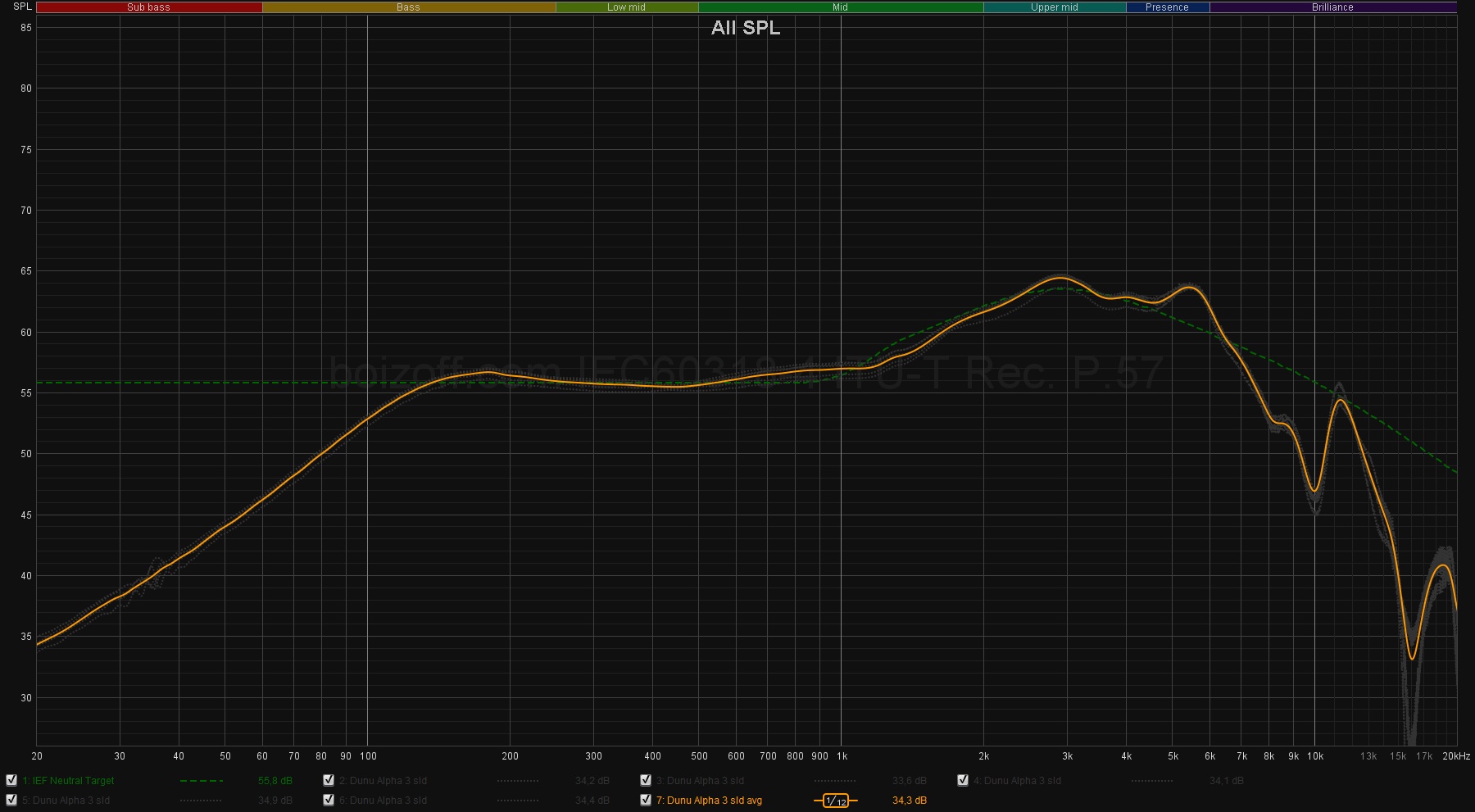
The DUNU Alpha 3 frequency response with perforated eartips:
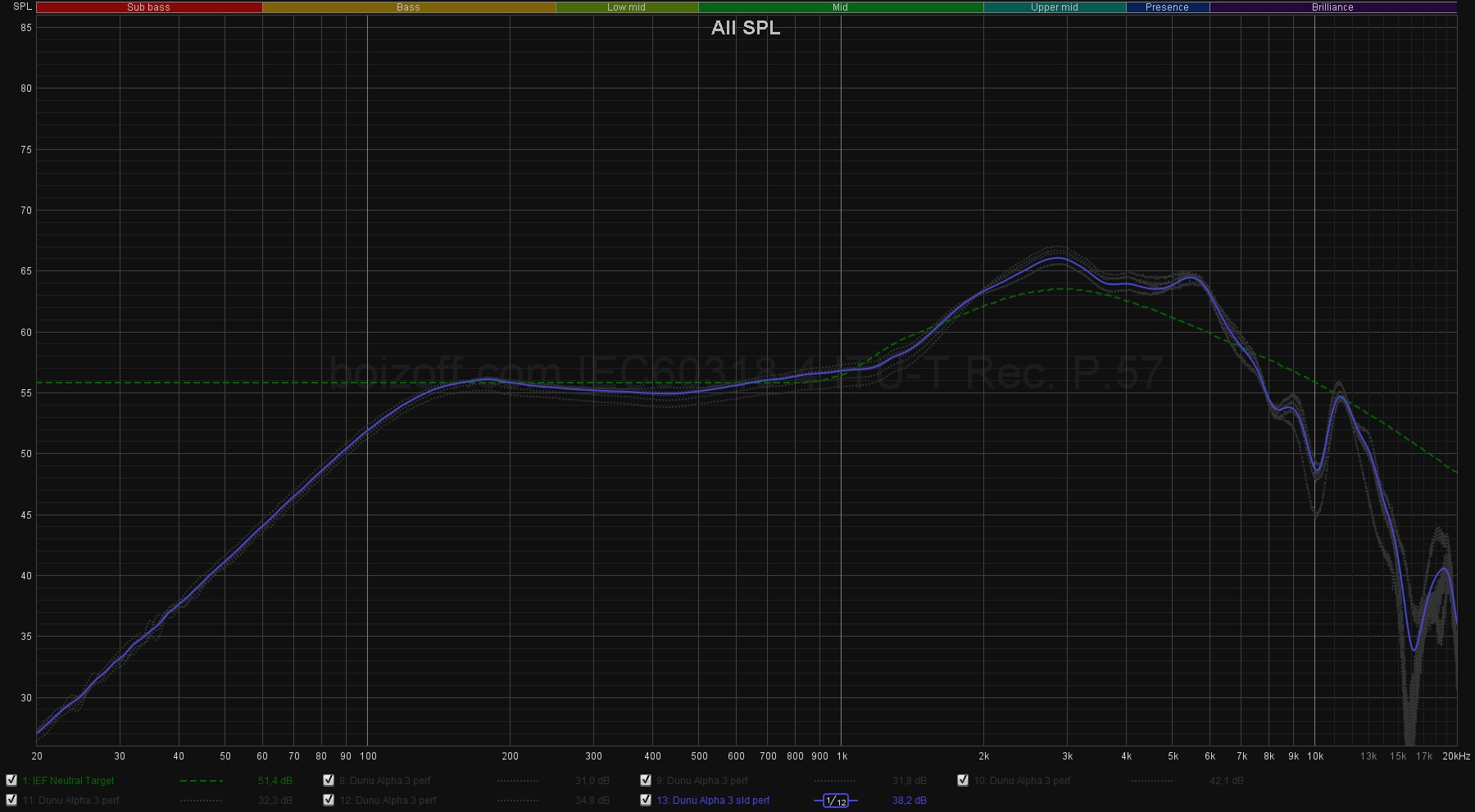
A quick comparison:
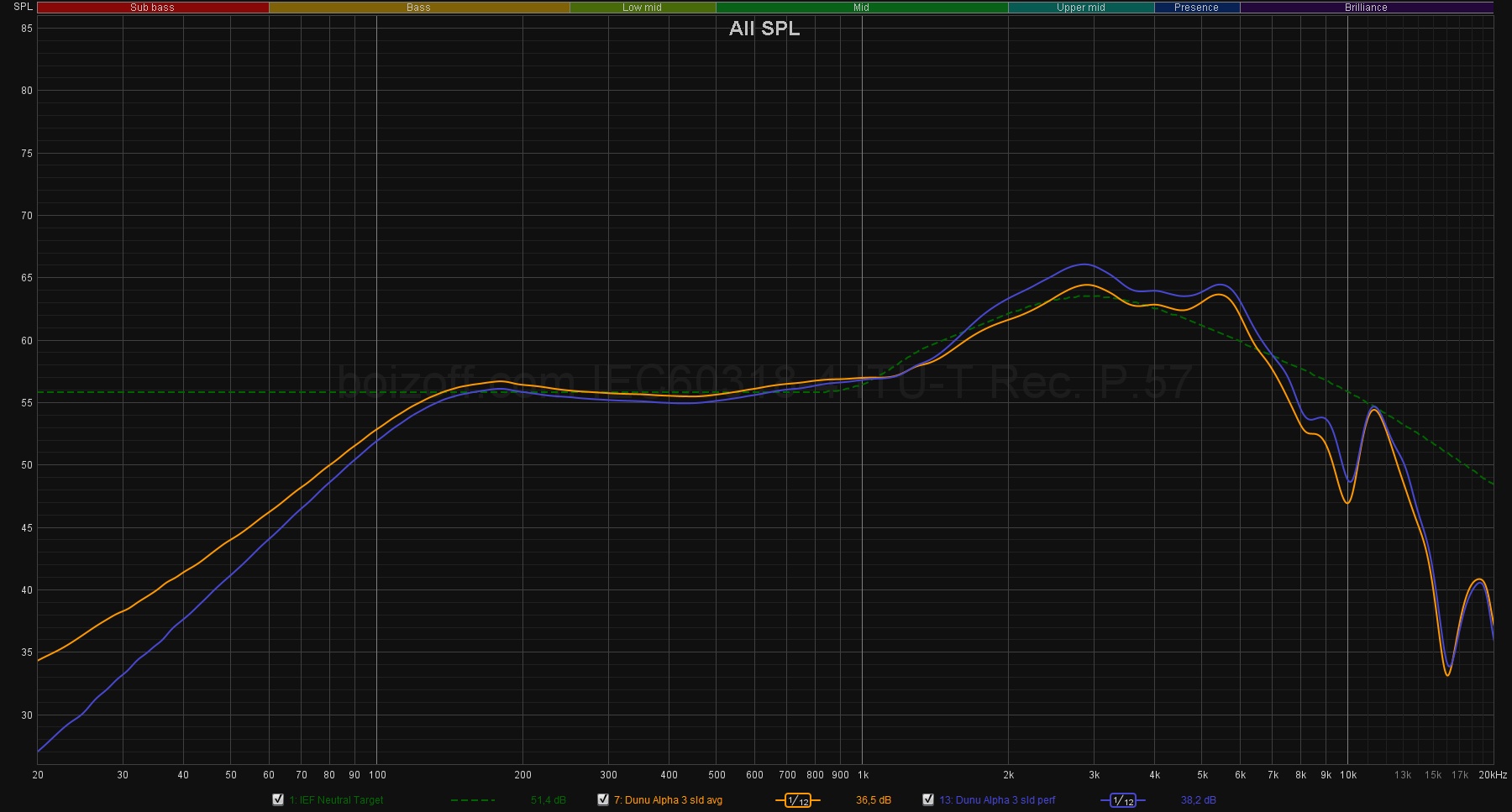
I only have one comment on the graphs: subjectively, the lower-frequency section is much larger than the measurements showed. The bass and the subbass are, of course, weaker than in in-ear headphones, but they’re significantly stronger than the graphs show! Although these aren’t even enough to correspond to a neutral frequency response.
Equalization tips
Adjust the bass and subbass to your liking and in accordance with the fit that you’ll eventually get used to. the measurements, unfortunately, don’t let me advise anything specific.
Summary
The wired earbuds – even with a very decent sound – are either for specific connoisseurs or for those who decisively reject the in-ears. Given all those limitations on listening conditions (there’s no way you could use those in the subway, for example), given a non-detachable cable and a subjectively unstable fit, the Alpha 3 really can sound so ‘widely’ and ambitiously… Not any in-ear headphones know such a trick! The most expensive can, though. Yes, the subbass frankly underperforms, but the middle and the top sections are delicious!
Do you only listen to your music in the quiet and peaceful comfort of your home? Do you hate the in-ear models? Do you hate the ear-enveloping headphones too because they sweat your ears off? Then yes, the Alpha 3 are a great option for you.
Long story short, consider all the pros and cons you could imagine before buying the Alpha 3: make sure that these headphones are exactly what you need. And then the Alpha 3 won’t disappoint you.

